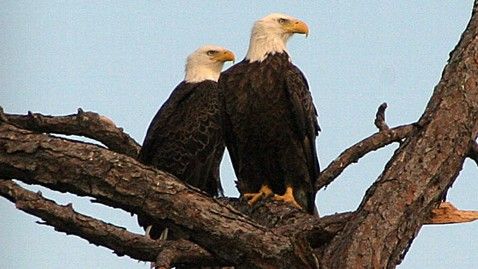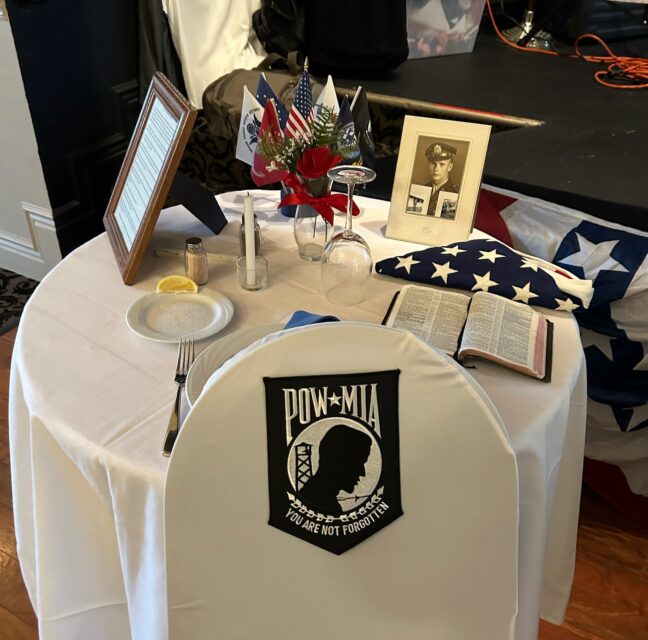
THE ATALA BUTTERFLY AND ITS HOST PLANT HELEN GRAZIANO, HERONS GLEN KIM BASILE, HERONS GLEN
The Atala butterfly (Eumaeus atala) is known for its vibrant colors and fascinating life cycle. It is native to the Southeastern United States and parts of the Caribbean. It has come to near extinction but has resurged, tied to the availability of its host plant, the coontie (Zamia integrifolia) which is a native cycad found in Florida and the Caribbean.
The Atala was thought to be extinct but is a conservation success due to landscaping practices and the coontie becoming popular in residential and commercial gardens. The coontie was once used by the earliest residents of Florida as a source of food. Although the plant is naturally poisonous to humans, the Seminole tribe developed a way of preparing roots and underground stems so toxins were extracted and the remaining starch was used for baking bread.
The female Atalas lay their eggs on the coontie leaves and the larvae feed on the leaves, which provide them with toxic compounds for defense against predators. After feeding, the caterpillars form pale chrysalises with metallic gold markings. The Atala butterfly is brilliantly colored, with red or orange bodies and bright yellow spots, which serve as a warning to predators. Adults have velvety black wings with iridescent blue-green scales and a bright red-orange abdomen. While they don’t rely on a nectar source, they help pollinate flowering plants.
With the resilience of this butterfly and conservation practices, including the use of more native plants, the Atala has rebounded and can now be found in increasing numbers. Consider planting coontie in your garden to support the Atala, but it also is an attractive and low maintenance plant in your landscaping. Coonties are drought tolerant and thrive in sunny to partially shaded areas and are a good addition to butterfly gardens.
AND IT’S A NEW SEASON FOR THE EAGLES! LINDA LYNCH, HERONS GLEN
The snowbirds aren’t the only ones returning to their Florida homes. It’s also the 2024/25 season for Florida bald eagle nesting, and our North Fort Myers celebrity eagles, M15 and F23 (Male 15, Female 23) have returned to their nest about 60 feet up in a slash pine on the Bayshore Road property of Dick Pritchett Real Estate.
From 2006-2014, the original bald eagle pair known as Ozzie and Harriet utilized this nest. Ozzie died in the fall of 2015 and Harriet took a new mate, M15. From 2015-2022, Harriet and M15 successfully raised at least one eaglet every season from this nest.

After eight seasons as a mated pair, in February 2023 Harriet left and never returned to the nest. M15 stepped up and on his own successfully raised their young E21 and E22 (Eaglets 21 and 22) to fledge. For the next season, 2023/24, M15 mated with another female, F23, to initiate a new chapter in the North Fort Myers eagle nest lore.
Bald eagles are known for their nest affinity and often reuse the same nest year after year. Even if one of a pair dies, as was the case with Ozzie, the existing partner (Harriet) often uses the “old” nest with a new partner (M15). Since last season M15 and F23 have made this nest their home.
Because the Caloosahatchee River is only about a half mile from the nesting site, the river provides a key source of food for the adults and eventually their eaglets.
One of the things that makes this eagle nest special is that D.F. Pritchett Real Estate has for 13 years provided a live webcam view of the nest. There are four live feed cameras that provide different views of the nest and its residents, none of which disturb the eagles or make any sounds.
Since M15 and F23 are using this same nest, the cameras continue to provide coverage of their nesting activities. Thousands of viewers are often online watching the pair and eventually their eaglets. People can also stand outside a fence around the property, using their own cameras and phones to take pictures and videos of the nest and eagles.
This season is now well underway with the arrival of egg #1 on November 8 and egg #2 on November 11. In approximately 30 days, it is hoped the attentive parental care will yield two precious eaglets.
The website is available at https://dickpritchettrealestate.com/. Using the website, you can watch in real time as M15 and F23 mind the nest, as the eggs hatch, and as the parents feed and care for their eaglets until they fledge. We are delighted that M15 and F23 have chosen to stay at the Bayshore nest so we can all observe the breeding and parenting activities of these truly enchanting creatures.
MISTLETOE: ITS MEANING, LEGEND, AND LORE CANDACE HUETTEMAN, HERONS GLEN
Of all the plants used as Christmas decorations, none has the long and interesting history as the mistletoe. The mistletoe tradition says that a man is allowed to kiss any woman standing beneath a sprig or bouquet of mistletoe, and vice versa. If a kiss is refused, bad luck will befall the person who said “No.”
But what kind of a plant is mistletoe? Mistletoe is a semi-parasitic plant that produces yellow flowers and small white berries. It is most easily seen in winter, and it grows almost exclusively in fruit trees, maples and sometimes oak trees. It finds its home, like many seeds do, through bird droppings. Birds eat the white berries and spread the seeds while sitting on the branches. As the seed begins to grow, the plant attaches itself to the host tree in order to get water and the essential nutrients it needs to survive.
Not only is mistletoe a parasitic plant that comes from bird droppings, but the origin of the name itself can be somewhat unattractive. One translation is derived from two Anglo Saxon words, “mistle” meaning dung and “tan” meaning stick or branch. But, another translation of the Saxon word “mistl-tan” translates to “different twig.”
Druid priests saw mistletoe as a “different twig.” They considered it a symbol of life because even when its host is lifeless, it is green and bears fruit in the winter. Its history goes back to the first century A.D. to the Celtic Druids. This ancient civilization of people lived on the British Isles in what is now Ireland and Scotland. Druid priests thought mistletoe was sacred because it didn’t grow in the ground. When they found it growing on an oak, their most sacred tree, they considered it to be the soul of the tree. The high priest would climb the tree on the sixth night of the new Moon after the winter solstice and cut the mistletoe with a golden sickle. Worshippers caught the pieces in their long white robes or on a white cloth spread under the tree. It was bad luck to let even the smallest piece touch the ground. The faithful would wear mistletoe charms for good luck and protection from witches and evil spirits. Sprays of mistletoe hung over the doorway ensured that only happiness could enter the home.
Today we hang mistletoe over our doorways with the hope of getting a kiss. But how did this tradition come about? In old Norse, or Scandinavian mythology, there is the legend of Frigga, the goddess of love, who had a son named Balder who was the god of innocence and light. To protect him, Frigga demanded that all creatures, and even inanimate objects, swear an oath not to harm her son. But she forgot to include mistletoe. Loki, the god of evil and destruction, learned of this and made an arrow from a sprig of mistletoe. He then tricked Hoth, Balder’s blind brother, into shooting the mistletoe arrow as he, Loki, guided it to kill Balder. The death of Balder, the god of light, meant the death of sunlight and long winter nights followed in the north. Frigga’s tears fell on to the mistletoe and they turned into white berries. She decreed that mistletoe should never cause harm again, but should promote love and peace. From then on, anyone standing under mistletoe would get a kiss. Even mortal enemies meeting under mistletoe by accident had to put their weapons aside and exchange a kiss of peace, declaring a truce for the day.

Have a Merry Christmas, and if you find yourself standing under the mistletoe, enjoy a kiss from your special someone.
CHRISTMAS TREE AND HOLIDAY CANDLE FIRE SAFETY CRAIG WOOLLEY, HERONS GLEN
The SSEP would like to increase your awareness about holiday fires in your homes.
FACTS ABOUT HOME HOLIDAY FIRES
(Source: National Fire Protection Association)

• One of every three home Christmas tree fires is caused by electrical problems.
• A heat source too close to the tree causes about one in every four Christmas tree fires.
• More than half (56 percent) of home candle fires occur when something that can catch on fire is too close to the candle.
• December is the peak time of year for home candle fires. In roughly 11 seconds a Christmas fire can spread to nearby combustibles. Be sure to keep lit candles away from all combustible materials.
Let’s all have a safe Christmas season.



USE GENERATORS SAFELY AT HOME CRAIG WOOLLEY, HERONS GLEN
With Milton long gone, the SSEP just wanted to follow up on a few portable generator safety tips.
Generators are emergency equipment that provide a secondary source of power when there is an electric failure. Many of us used portable generators because of power failure in the wake of Hurricane Milton. Generators can be helpful during a power outage, but they present serious health and safety concerns.
Be Aware Of Hazards • Carbon monoxide poisoning • Electrocution • Fire

Safety Tips Be sure to read the manufacturer’s instructions on how to use the generator. Carbon Monoxide Poisoning • Do not assume that you are safe. Carbon monoxide from generators is completely colorless and odorless, so you won’t know if it’s there. It could kill your family and your pets. • Do not use a generator indoors or in partially enclosed spaces – including homes, garages, and crawl spaces – even those areas with partial ventilation. • Do not operate near open doors and windows. Using fans will not prevent carbon monoxide build-up in the home.
• Install battery-powered carbon monoxide alarms inside your home to alert you of dangerous levels. Be sure to follow the manufacturer’s recommended placement.
• Keep your generator at least 20 feet away from any openings.
Electrocution Or Electric Shock

• Always connect the generator to appliances with heavy-duty extension cords. Do not use extension cords that are frayed, spliced or if the grounding pin is missing.
• Do not run your extension cords through standing water or across roadways.
• Do not use a plug strip to run multiple extension cords off your generator. Fire
• Keep your generator outside and fuel your generator outside.
• Do not store fuel for your generator in your house. Gasoline, propane, kerosene, diesel and other flammable liquids should be stored outside living areas in properly labeled, non-glass safety containers.
• Do not store fuel near a fuel-burning appliance, for example a gas stove.
• If the fuel is spilled or the container is not sealed properly, invisible vapors from the fuel can travel along the ground and be ignited by the appliance’s pilot light or by arcs from electric switches.
• Before refueling the generator, turn it off and let it cool down. Gasoline or other flammable liquids spilled on hot engine parts could ignite, and invisible vapors from the fuel can travel along the ground and be ignited by the generator’s pilot light or by arcs from electric switches in the appliance.
HE SAVED THE WORLD! JACK NELSON, HERONS GLEN
Tommy Brainerd was handsome, loveable, and gifted. He was precocious since the day he was born. At two weeks old, he was winking at his mom. At six months he was walking. At eighteen months he was reciting the alphabet, forward and backward! On his second birthday, he showed his mathematical prowess by mastering long division. He had memorized the periodic table of the elements while a kindergartener.
By the time Tommy had graduated from eighth grade, he’d taken every IQ test that was available on the planet, and he aced them all! His teachers were awestruck with his brain power, and when he was sixteen years old, he was experimenting with chemistry, his favorite subject. His parents had given him permission to set up a lab in their basement.
The situation around the globe was an absolute mess. Neighboring countries were at war with each other and global warming was accelerating at an alarming rate. Tommy was appalled at the peril of the planet and vowed to take action. He experimented with different mixtures of chemicals. His objective was to create a device that would make a hydrogen bomb look like a firecracker.
But his invention was not to be a weapon of mass destruction. Rather it was a gas that would turn evil into good, expanding and spreading into the atmosphere with incredible speed. On his seventeenth birthday, he created a formula that would revolutionize human behavior. This formula, when released into the atmosphere, would spread around the globe in just three days, and, when inhaled, would transform everyone into a peaceful state of mind, a love-thy-neighbor attitude.
One week after he celebrated his birthday, he was ready to put his formula to the test by inhaling a tiny amount, only one-tenth of a cubic centimeter, and the result was astounding. His mind was transformed into a state of euphoria, a mindset that would benefit everyone within whom he had contact. He helped the elderly cross busy street intersections. He tutored classmates who were struggling with their courses, and he campaigned for the sharp reduction of fossil fuels.
Now he was ready. Two weeks after his birthday, with the help of his father, he dragged to his back yard a large cannister, larger than a forty-gallon hot water heater … and opened the valve. With a loud hissing sound, the gas was spreading at warp speed. In just a few hours, the gas from the container spread all over North and South America. Would his invention work?
Tommy joined his parents in the family room to watch the news. There was nothing unusual reported. Tommy was saddened, so he decided to create another cannister, and spent most of the night getting ready to release his formula for the second time. Shortly after sunrise, father and son lugged the second round of the magic potion for immediate release, and by late afternoon, the gas had reached Europe and Asia.
Again, the Brainerds gave their undivided attention to the news. By noontime the global situation was status quo, but by the time the evening news rolled around, things began to change. Two middle- eastern nations who’d been warring with each other for years declared a cease fire. Auto manufacturers around the globe announced plans to sharply increase production of electric vehicles. The crime rate in twenty of the largest cities on the planet dropped to near zero by the previous midnight. Tommy Brainerd’s extraordinary creation was working!
The miracle continued. Four days after Tommy’s release of his magical creation, the six nations with the most powerful military establishments announced plans for total disarmament, with the United States and Russia leading the way. Global warming was stopped in its tracks, and three months later, Mother Earth’s “fever” was cooling. The polar ice caps were expanding once again and polar bears were leaping with joy. Thanks, Tommy Brainerd, thanks for saving the third rock from the sun!
Tommy wasn’t contented with just one invention. His next endeavor would be colossal, monumental, and quite possibly, impossible. He’d be working on a device that would stop hurricanes, blizzards, and tornadoes in their tracks. Stay tuned!
I LIVE HERE TOO BECKY GIGNAC, HERONS GLEN
Hello, my name is Toro and I’m fairly new to the neighborhood. My momma (Lin Sutter) and I moved to a lovely house on Palo Duro Boulevard in May 2024. We drove all the way from Austin, Texas. My sister Randi is still in Austin with my grandmamma.

However, I have cousins Murphi and Maggie who live here too. I get extremely excited when they come for a visit. Hopefully, you will learn more about them in an upcoming story. For now … it’s all about me.
I’m 9 years old and a “Shih- poo,” which is a Shih tzu/poodle mix. I’m a handsome fellow with my dark and light gray fur.
Please do not take that wrong, I’m not stuck up by any means, but I do have a beautiful coat.
Momma found my breeders in the newspaper and learned I would be their last litter. When she came to visit, she fell in love with me right away. Lucky me, especially since I have a couple of health issues, but momma makes sure I get the medication I need and my doctor is pleased with my checkups.
I bet you are wondering how I got my name. It has nothing to do with bullfighting. My Momma’s oldest daughter named me after a guitar player in a band called “My Chemical Romance.” She must have liked that guitar player (maybe they had a chemical romance; hee-hee). The name Toro suits me fine.

I am still getting my “Glen” legs, so I’m shy at first. However, I do eventually warm up to people and other dogs I see daily. Momma walks me 2 to 3 times a day and I have a pretty set routine. In the morning, I turn left and go down Palo Duro and, in the evening, I turn right and go around to “The Boulevard.” I can be a little stubborn at times; I’ll turn and go home when I’m ready.
I do enjoy seeing the wildlife here, especially the bunnies. However, I got into a yelling match with a couple of Sand Hill Cranes; it turned out okay, but boy were they cranky birds. I also get to see the golfers tee off on Hole 9. I am doing a decent job of not barking at them on their backswing. Momma says that would be most impolite.

We live here full time, and I love our house. I have lots of toys I get to scatter around, such as my hedgehog, bunny, monkey, but my favorite is a soft hamburger (it has to be soft; I’ve had 14 teeth pulled). In the evenings, I normally sleep with momma, but I’m starting to like the nice cool tile floor too. If you see us out and about, don’t be shy. Stop and say hello; we love meeting people and receiving all the welcomes to the Glen!






